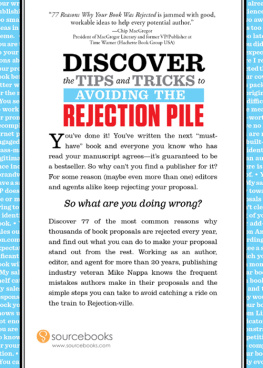Copyright 2014 Houghton Mifflin Harcourt Publishing Company
All rights reserved
www.hmhco.com
cliffsnotes.com
No part of this work may be reproduced or transmitted in any form or by any means, electronic or mechanical, including photocopying and recording, or by any information storage or retrieval system without the prior written permission of Houghton Mifflin Harcourt Publishing Company unless such copying is expressly permitted by federal copyright law. Address inquiries to Permissions, Houghton Mifflin Harcourt Publishing Company, 215 Park Avenue South, New York, New York 10003.
The publisher and the author make no representations or warranties with respect to the accuracy or completeness of the contents of this work and specifically disclaim all warranties, including without limitation warranties of fitness for a particular purpose. No warranty may be created or extended by sales or promotional materials. The advice and strategies contained herein may not be suitable for every situation. This work is sold with the understanding that the publisher is not engaged in rendering legal, accounting, or other professional services. If professional assistance is required, the services of a competent professional person should be sought. Neither the publisher nor the author shall be liable for damages arising here from. The fact that an organization or Website is referred to in this work as a citation and/or a potential source of further information does not mean that the author or the publisher endorses the information the organization or Website may provide or recommendations it may make. Further, readers should be aware that Internet Websites listed in this work may have changed or disappeared between when this work was written and when it is read.
Trademarks: CliffsNotes, the CliffsNotes logo, Cliffs, cliffsnotes.com, and all related trademarks, logos, and trade dress are trademarks or registered trademarks of Houghton Mifflin Harcourt Publishing Company. All other trademarks are the property of their respective owners. Houghton is not associated with any product or vendor mentioned in this book.
Library of Congress Cataloging-in-Publication data is available.
e ISBN 978-0-544-44473-7
v1.0714
At-a-Glance
Solomon Northups 12 Years a Slave recounts the authors life story as a free black man from the North who was kidnapped and sold into slavery in the pre-Civil War South.
The son of an emancipated slave, Northup was born free. He lived, worked, and married in upstate New York, where his family resided. He was a multifaceted laborer and also an accomplished violin player. In 1841, two con men offered him lucrative work playing fiddle in a circus, so he traveled with them to Washington, D.C., where he was drugged, kidnapped, and subsequently sold as a slave into the Red River region of Louisiana. For the next twelve years he survived as the human property of several different slave masters, with the bulk of his bondage lived under the cruel ownership of a southern planter named Edwin Epps. In January 1853, Northup was finally freed by Northern friends who came to his rescue. He returned home to his family in New York and there, with the help of editor David Wilson, wrote his account in 12 Years a Slave.
Written by: Solomon Northup (as told to editor David Wilson)
Type of Work: Slave narrative
Genre: Autobiography/Memoir
First Published: 1853
Setting (primary): The Red River region of Louisiana
Settings (secondary): Saratoga Springs, New York; Washington, D.C.; New Orleans, Louisiana
Main Characters: Solomon Northup (aka Platt), James H. Burch, William Ford, John M. Tibeats, Edwin Epps, Patsey, Mistress Epps, Mr. Bass, Henry B. Northup
Major Thematic Topics: Slavery as a moral cancer; freedom; injustice; the inherent dignity of all humanity; the place of women in society; religion and slavery; mans inhumanity to man; slaverys toll on servant and master alike
Major symbols: Chains; the whip; the Bible; water; the swamp
Movie Versions:12 Years a Slave (2013)
The three most important aspects of12 Years a Slave:12 Years a Slave presents a startlingly accurate and verifiable account of the common slave experience in the United States in the antebellum (pre-Civil War) South. From start to finish, basic facts about the time, the places, the people, and the practices of the day are incorporated, sometimes in excessive detail, into Northups story. He speaks with authority on all subjects of his enslavement, naming names and pointing out landmarks along the way. In doing so, he dares skeptics to refute his story, knowing that public records and common knowledge would defend it. For example, when Northup accuses a wicked slave trader of keeping him captive in Washington, D.C., he not only names that slaver, he names the slavers accomplice, identifies exactly where the slave pen is hidden, and describes the physical structure of the slave pen in detail. The result? During the trial that took place after Northup had been freed, that slave trader couldnt deny having kept Northup as his captive in that now-exposed slave pen. Additionally, the accuracy of and factual detail in 12 Years a Slave have kept this book prominent as a reliable historical reference on slavery for more than 150 years since it first debuted.
12 Years a Slave serves as a timeless indictment of the practice of chattel bondage, or human slavery. Northups detailing the abuses he enduredand those he was forced to inflictprovides a warning to all generations of the moral costs that slavery exacts from everyone involved. The slave himself or herself is degraded, made to suffer awful torments, and cruelly robbed of physical, emotional, and spiritual riches. Still, the slave is not the only one who suffers. By participating in slavery, the master is morally degraded and emotionally desensitized. His religion is made hypocrisy. His family legacy is robbed of basic human graces like love, justice, and integrity. In this respect, Northups 12 Years a Slave is notable for giving human faces to the evil that was once common practice, and for sounding a constant warning of the awful consequences of chattel bondage.
Book Summary
12 Years a Slave covers five primary periods in Solomon Northups life:
1. Solomon Northup: Free Man
In Chapters I and II, Northup tells of his life as a free black man living in upstate New York. Born in July 1808, he was the son of an emancipated slave. He grew up working on a farm at his fathers side, and also was educated to a degree of competence in reading and writing. Additionally, he learned to play the violin, a skill that would be both a blessing and curse to him in coming years. At age 21, he married Anne Hampton, and they settled down to raise a family. Solomon worked in many trades, including farming, lumberjacking, and performing on the violin, while Anne earned money as a cook. They had three children.
In 1841, Solomon met two white men who offered him lucrative work with a circusif he would travel with them to Washington, D.C. Unsuspecting, he joined them in their travels and in Washington, D.C., after a day of unusual revelry and drinking, became terribly ill. On his way to see a doctor, he passed out. When he woke up, Solomon Northup was alone, chained in darkness.
2. Solomon Northup: Captive
This second period of 12 Years a Slave, told in Chapters IIIVI, relates how Solomon finds himself a prisoner in the slave pen of James H. Burch, a brutal slave trader in Washington, D.C. When Solomon protests his captivity and asserts his right to freedom, Burch responds by beating him into submission and threatening to kill him if he ever mentions his freedom again. At length, Solomon is allowed to join the other slaves being held by Burch, and he discovers just how hopeless his situation is. Surrounded by slaves and a few other kidnap victims, he is transported downriver, eventually landing in New Orleans, Louisiana.
Next page
















